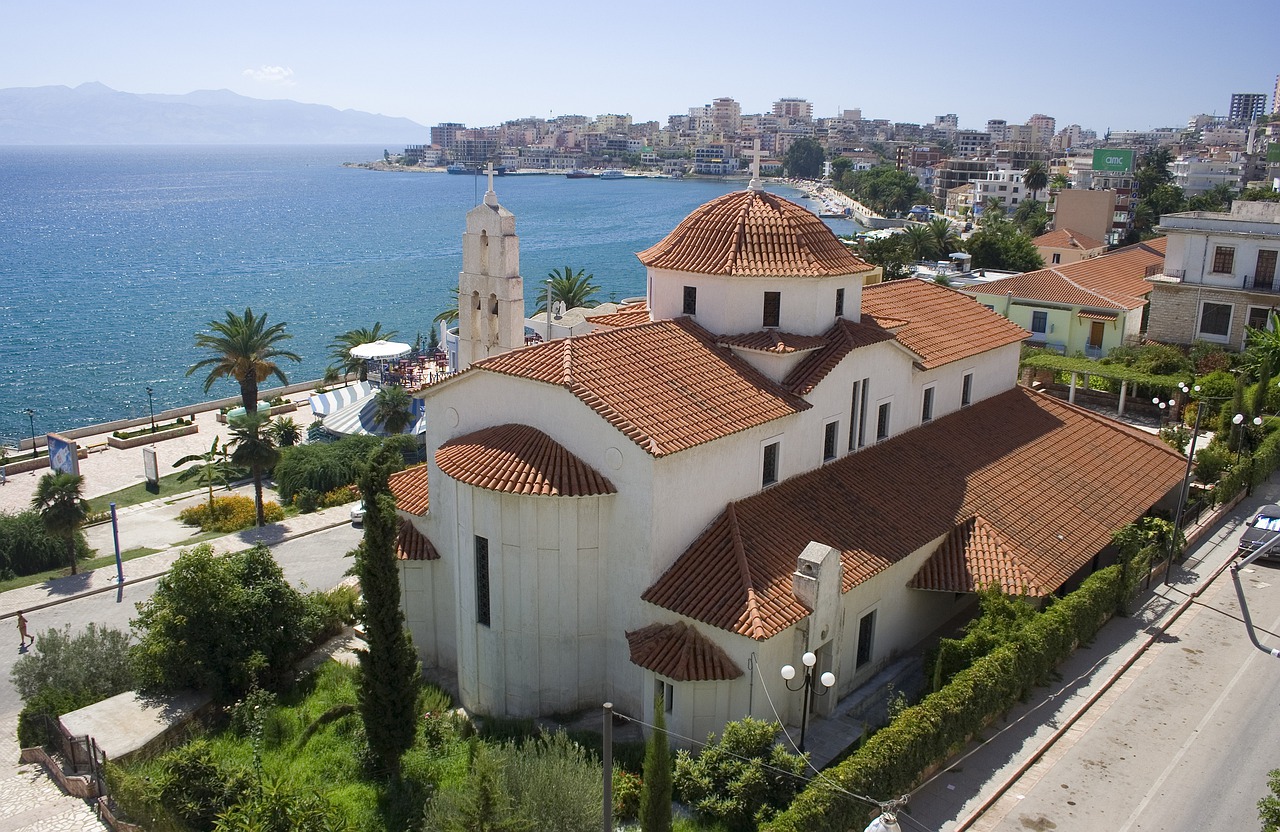- What sea is in Saranda? Ionian
- What are the beaches in Saranda? Pebbles
- How long does the transfer from Tirana to Saranda take? About 4-4,5 hours
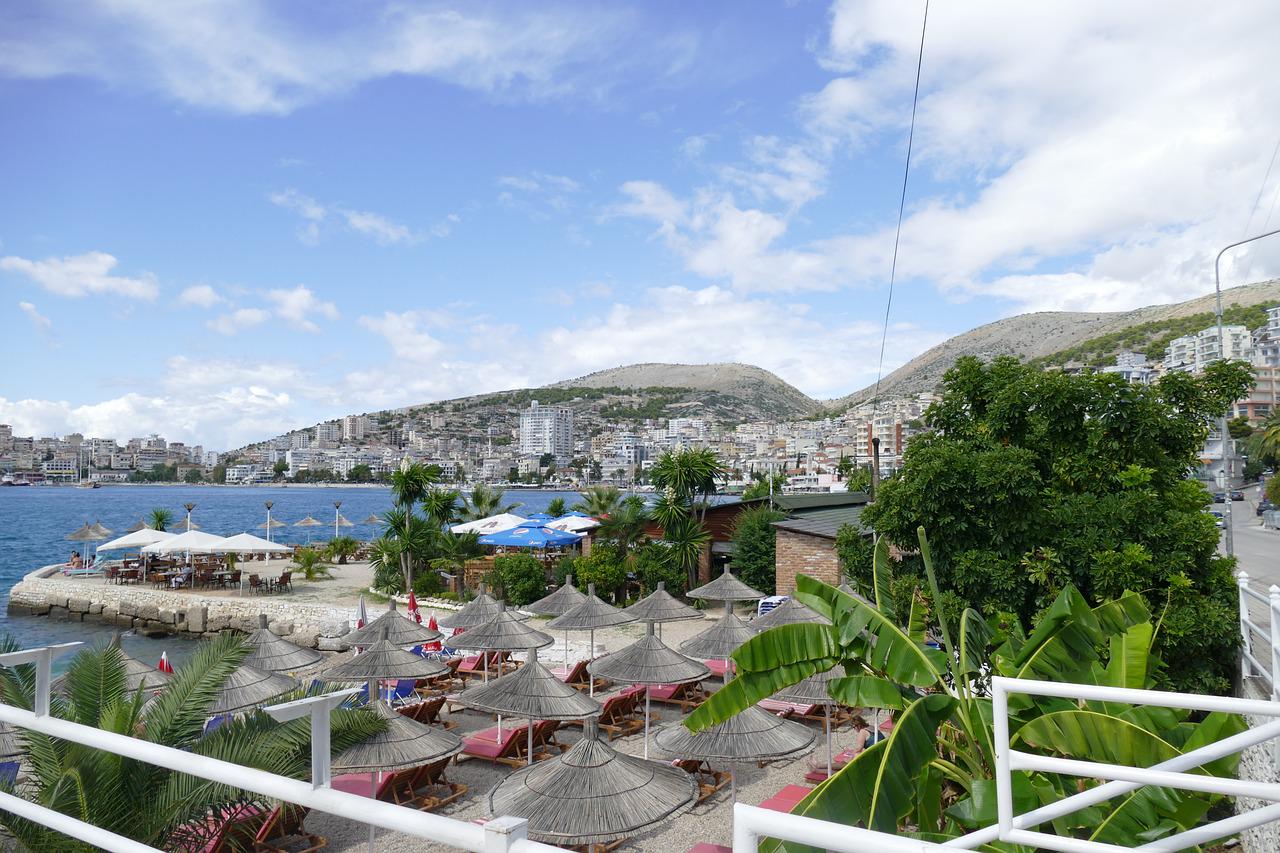
If Durres and Vlora are Albania with a pinch of Italy, in Saranda you can feel the influence of Greece, the city is only 26 km from the Greek border. You can feel it in everything: the scenery, the cuisine, the architecture, the traditions.
The scenery of Saranda is incredibly fascinating: the unnaturally blue water of the Ionian Sea is surrounded by picturesque mountain passes and gorges, with fast rivers and small mountain lakes. Perfect for a romantic vacation. But so far not quite optimal for a family vacation. Not everyone will find the five-hour transfer from Tirana airport easy.
Tip: If you do not like the long transfer from Tirana airport, you can get to Saranda from the island of Corfu. From many European countries, there are regular and charter flights to Corfu. And the ferry crossing from Corfu to Saranda, on average, takes no more than an hour. Ver más consejos para el viaje a Albania
The ruins of the ancient city of Butrint are very popular among tourists. Now it is a museum-reserve, listed as a UNESCO World Heritage Site. And thousands of years ago the Epirus King Pyrrhus ruled here. The same one who won a dubious, that is “Pyrrhic” victory over Rome.
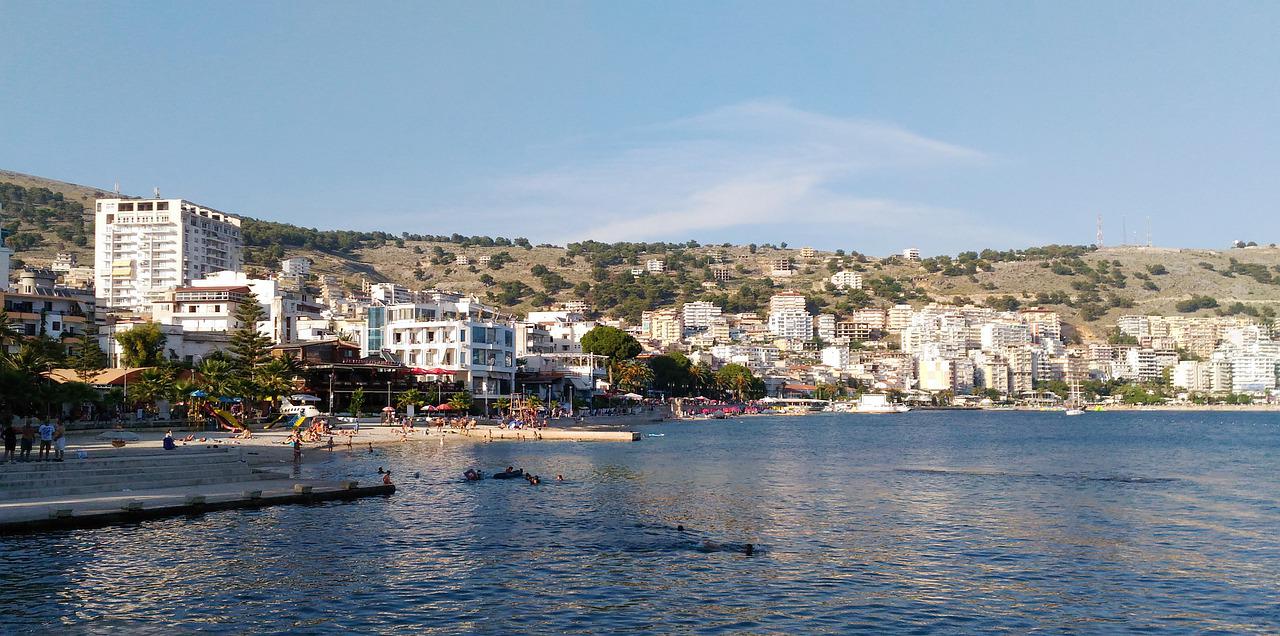
Climate of Saranda
Like any city by the sea, it is distinguished by moderation and mildness. The average summer daytime temperature reaches +35 degrees, nighttime temperature is 5-7 degrees lower. The summer heat is easily tolerated, thanks to the Mediterranean breezes. In winter it is warm enough, for example in January – +8 … +10 ° C.
The most suitable months for visiting the city are the months of May to September. Most of the year in the city is sunny. Thanks to the excellent climate, there are about 300 sunny days a year on average. So if you want to save some money without losing much in comfort, you can come to Saranda in April and October.
Beaches
The bay of the city. Saranda Bay
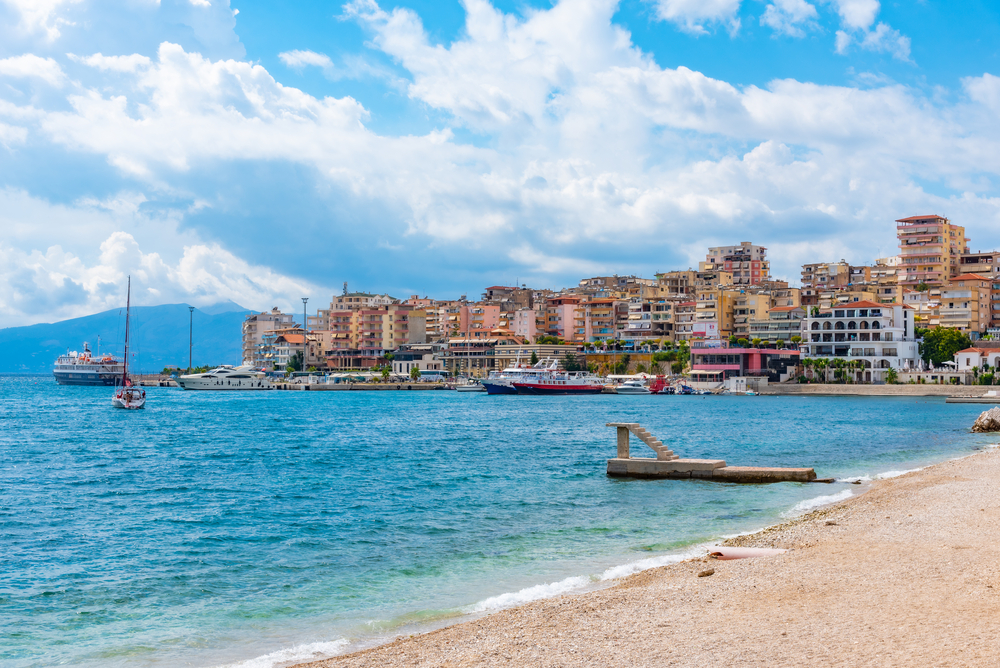
The main beach of Saranda is a horseshoe-shaped cove with a mixture of sand and pebbles next to the calm blue waters of the Ionian Sea. The beach is public and offers all the amenities of a European seaside vacation. Rowing boats can be rented on the shore, sun loungers are provided, and a boardwalk runs along the beach. This boardwalk is studded with lush palm trees, with ice cream carts and opening bars selling their wares in the summer. If you get hungry you can cross the street behind the promenade to dine in the cafes and seafood restaurants located in the front rows in Saranda.
Mirror Beach. Ksamil Beach
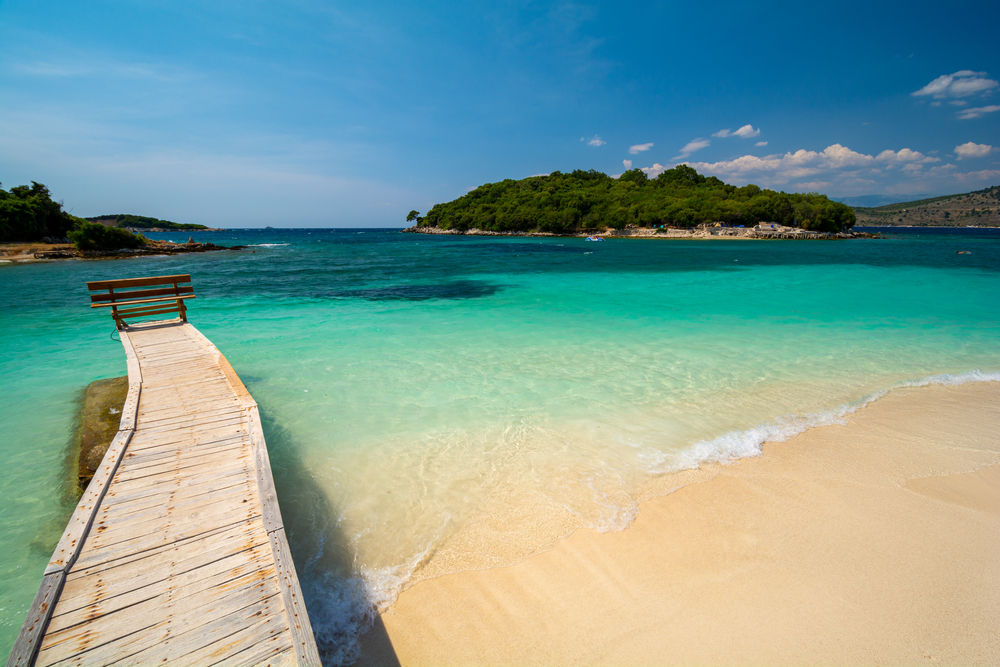
To the south of Saranda, half an hour away, on the road to the village of Xamile, is the secluded natural bay of Xamile, considered by most visitors to be the best in the whole Albanian Riviera. Despite this, many tourists who come here prefer to use the city beach of Saranda, so Mirror Beach, where there are no special facilities, remains fairly quiet throughout the summer. This allows you to relax in this natural spot, protected by cliffs, with bright turquoise waters that are calmed by limestone outcrops right on the shore. These local bounty beaches feel like they were specially designed for commercials.
Tip! For maximum comfort, it is better to visit Ksamil at the beginning or at the end of the season: late May and early September. During the season in Ksamil a lot of tourists from Western Europe.
Saranda sights
Despite an interesting and somewhat tragic history, Saranda has almost no sights. The city is famous for a memorable place – the ruins of the ancient city of Butrinti. In former times, it was majestic and famous in many lands, now its remains have become an archaeological museum – a reserve. There is a legend that says that when the son of the god Hermes – Pan died here. Read more about Albanian attractions here…
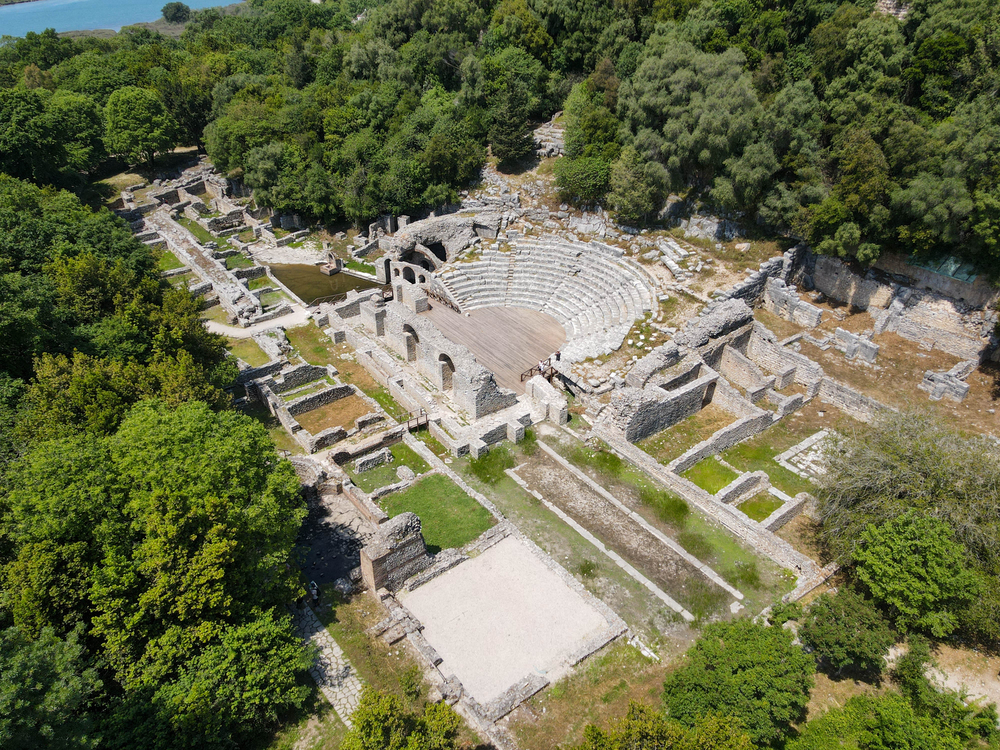
In the early twentieth century, archaeologists led by Luigi Ugolini discovered the walls of the ancient city, city gates, baths and a theater at the site of the excavations. Behind the walls of Butrinti, fortresses, villas and churches of those times have been preserved in their original form. Butrinti is a UNESCO World Heritage Site. And Saranda is also rich in natural monuments, for example, on its territory there are Konispol Caves.
Lecuresi Castle
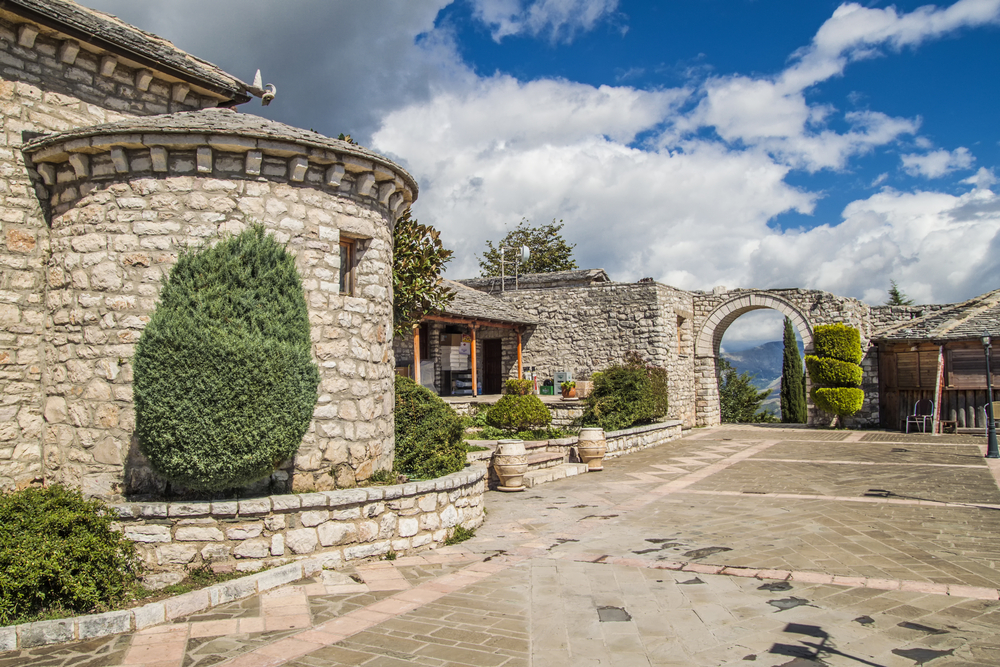
Saranda is surrounded on the coast by high hills, on top of one of which is an ancient stepped structure dating back to the early Ottoman days of Albania. Lecuresi Castle was once a citadel surrounding an entire village, but today it is in a dilapidated state. Only parts of the walls and a crumbling watchtower overlooking the bay remain. Most people make the steep climb to admire the panoramic views that extend all the way to Corfu and the Greek border.
Ruinas de una sinagoga en Saranda

There was a thriving Jewish community in ancient Saranda, as evidenced by the remains of this synagogue from the 200s. It had a whole network of buildings, with a school and a community center. As you explore the complex, you’ll notice the ornate Jewish mosaics on the floor, details of which revealed the building’s identity when it was first discovered in 2003. The mosaics depict a menorah, as well as a shofar (an ancient musical horn) and an etrogi (a citrus fruit consumed during the Sukkot holiday).
The Ethnographic Museum, which has amassed a countless collection of exhibits that vividly reveal the state’s history.
Nearby attractions
If you get tired of the beach vacation, do not sit still and go to the nearest settlements, they have many interesting and memorable places.
Blue Eye
25 km from Saranda, near the village of Musina, built in the traditional style of heavy stone blocks, in a mixed forest of hazel, cherry, pine and fir trees, 177 meters above sea level, deep from the ground, 18 springs of rare beauty called “Blue Eye”, which cannot be called other than a geological phenomenon.

Because of its oval shape and the color of the groundwater, dark blue in the center and blue around the edges, the body of water resembles a human eye. No one knows how deep it is.
Divers who tried to reach the bottom were only able to advance 45 meters in depth because of water pressure from below. The current speed is 6 cubic meters of water per second and the water temperature is about 13 degrees Celsius.
If you throw a pebble into the center of spring, after a while the same stone will reappear on its surface. This geological phenomenon is of tectonic origin. Its waters are believed to originate in the Drinos valley.

18 springs feed the Bystrica River, about 25 km long, and, through an artificial canal built in 1958, flow into the Ionian Sea “Blue Eye” also has a rich and diverse fauna, its surroundings are inhabited by wild animals: foxes, martens, reptiles and wild birds. “Blue Eye is Albania’s little treasure.
Near the picturesque waterfall near the “Blue Eye” there is a traditional wood and stone restaurant where you can taste the authentic Albanian beverage called “rakija”.
To the north of Saranda is the elegant resort of Dherny
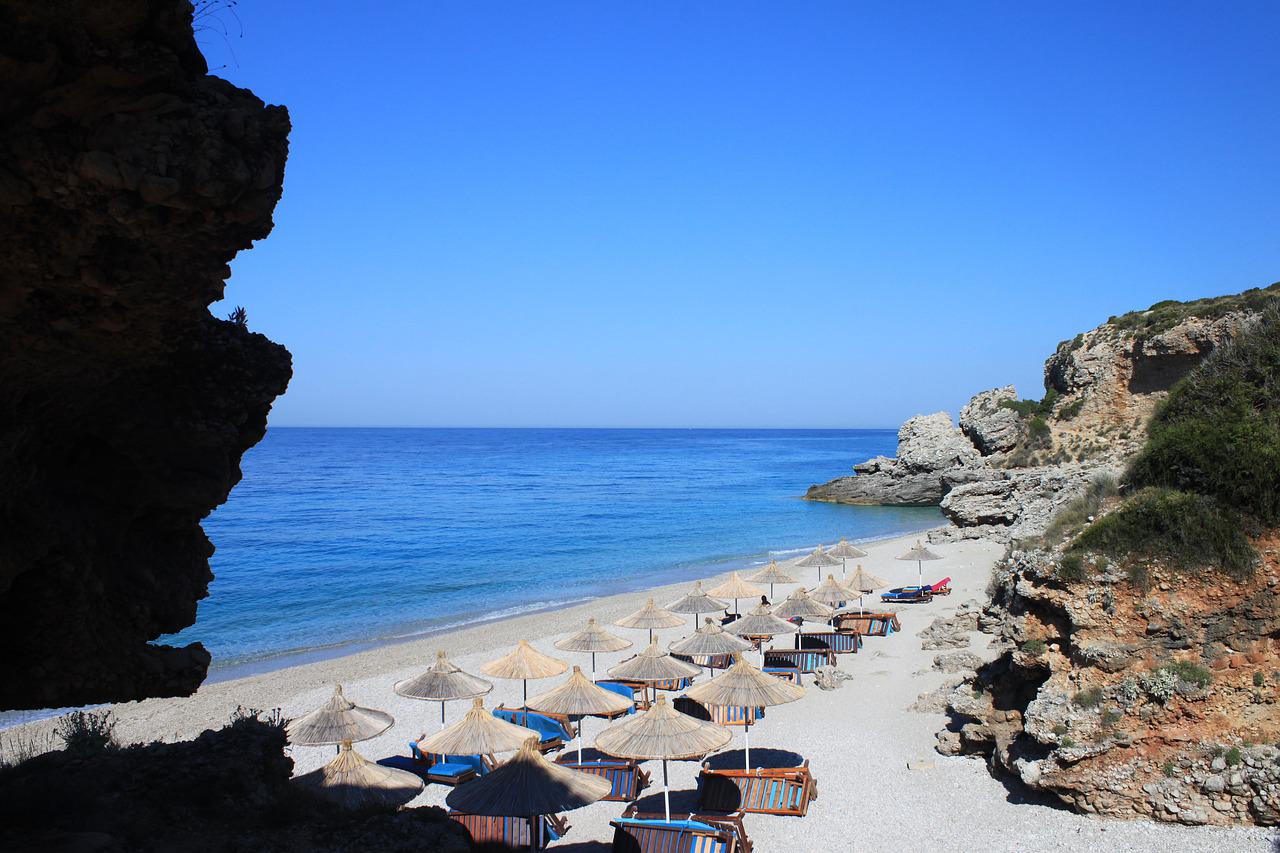
The epic Ceraunian Mountains descend to the water’s edge, and the village sits on a steep slope. This gives the place a real dramatic feel, and at Drimades Beach you can look up and see clouds rolling over the mountains even when the rest of the landscape is flooded with sunlight. You can head out of the hills to visit two historic monasteries or instead take a boat trip to see the caves and islands around this rugged stretch of coastline.
Acropolis

In the vicinity of the city of Saranda is an ancient city. It is worth visiting if only to look at the largest acropolis ever built: it is 7 times larger than the famous Athens.
Convent of the Forty Saints
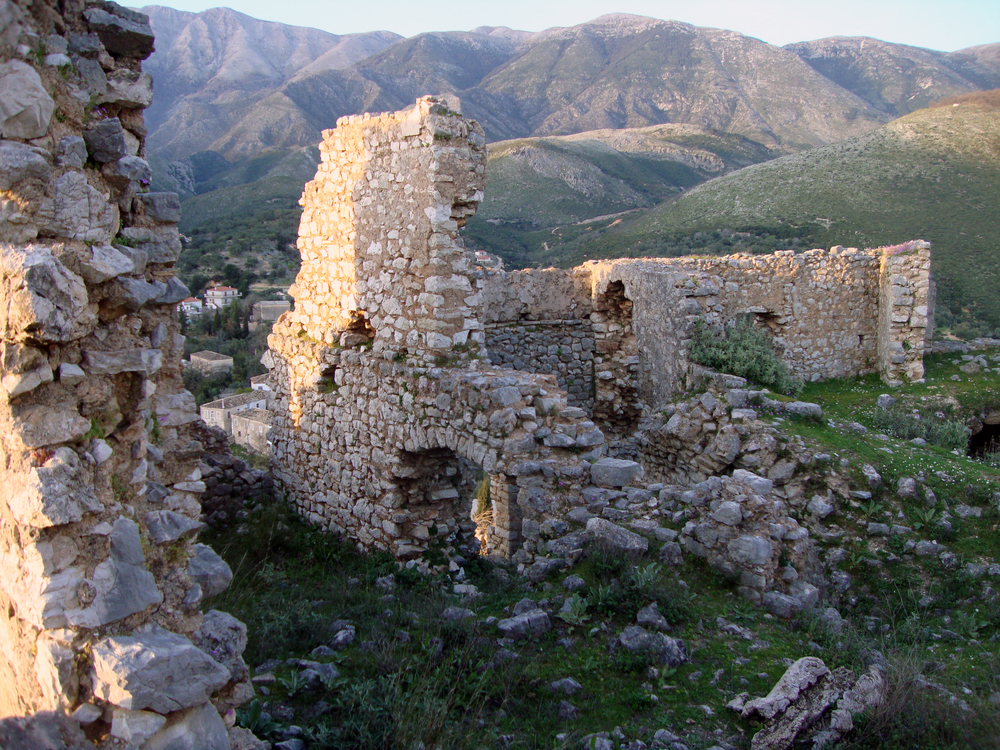
Saranda got its name from the monastery of the Forty Saints, which was built in the 400s on one of the hills behind the bay. “The Forty Saints” is the story of the forty Roman martyrs who were exiled to death in Siberia when they did not renounce their Christian faith. The monastery is in a state of ruin because of the military destruction, but much of the stonework has survived, and you can enter the crypt if you go to the town hall in Saranda. You can also go to the countryside to discover the monastery of St. Nicholas in Mesopotamos, so ancient that the stonework at its base existed even before Christianity in Albania.
There is an old church in Sheng Kol that is also worth a visit
